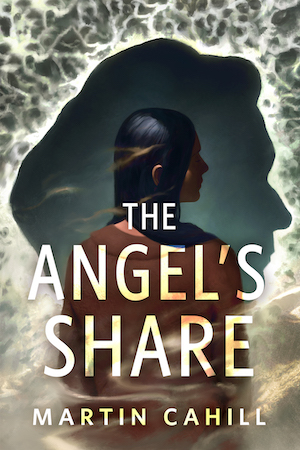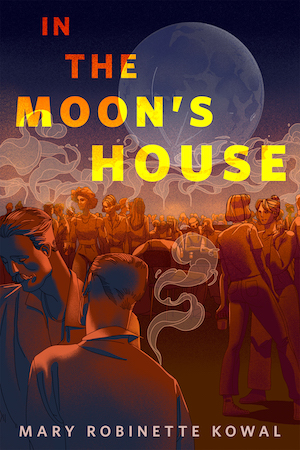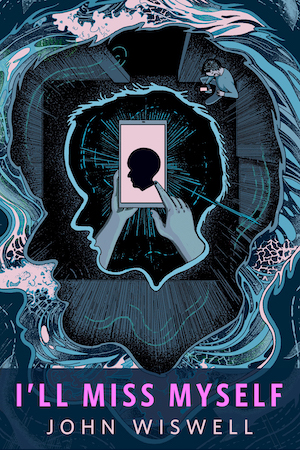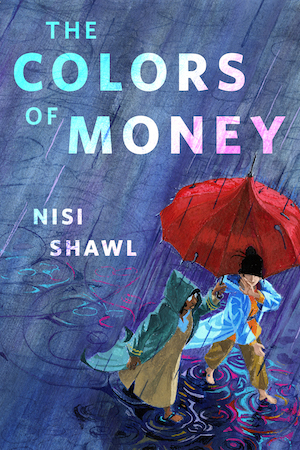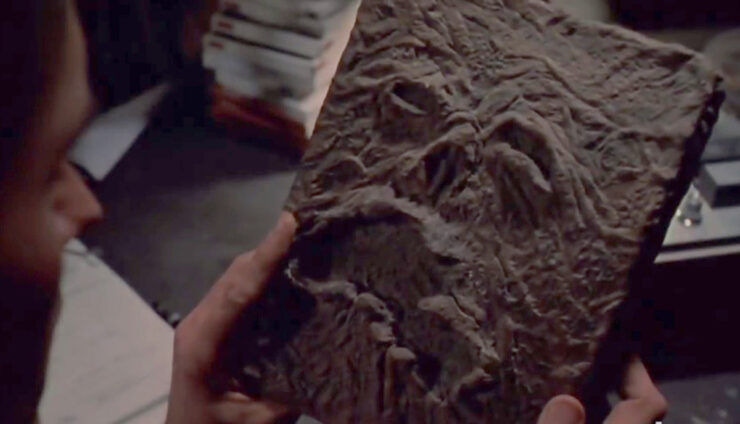Sadly, there are some books we’ll never be able to read because they only exist within films and novels. I, for one, would love to get my hands on a copy of George McFly’s A Match Made in Space from Back to the Future (1985) or S. Morgenstern’s Buttercup’s Baby, the sequel to The Princess Bride (1973)—actual author William Goldman only ever wrote one chapter, and so it remains a fictional in-world book (and who knows whether he even intended to write the full sequel or whether he was just messing with everyone).
On the other hand, there are in-story texts that so terrifying that I feel safer knowing they remain locked away in their fictional realms. Here are seven scary and sinister books that I’m glad aren’t actually real.
H.P. Lovecraft’s Necronomicon
The most influential and evil imaginary book of all time is likely the Necronomicon, a.k.a The Book of the Dead, which is purported to have been written by the fictional Abdul Alhazred. It makes its first appearance in “The Hound” (1924) and is mentioned in some of Lovecraft’s best known stories, including At the Mountains of Madness (1936) and “The Dunwich Horror” (1929). Details from within the book itself are sparse, but it is known to contain instructions for summoning otherworldly deities.
The Necronomicon shows up in film adaptations of Lovecraft’s works, but it also plays a key role in the Evil Dead movies. There are a few different versions of the book throughout the franchise (this video breaks them down!), but they all contain demon-unleashing incantations and they often appear to be bound in human skin, with a flayed face stretched across the cover. One of the Evil Dead versions of the book even makes a cameo appearance in Jason Goes to Hell: The Final Friday (1993).
A few “real” versions of the Necronomicon have been released over the years, including the Simon Necronomicon in 1977, which has almost no connection to Lovecraft’s mythos, and Necronomicon: The Wanderings of Alhazred in 2004, which is as faithful as possible to Lovecraft’s writings. Although these books can be said to physically exist, they thankfully lack the fictional Necronomicon’s dark magic.
The Book of Names from Matt Ruff’s Lovecraft Country (2016)
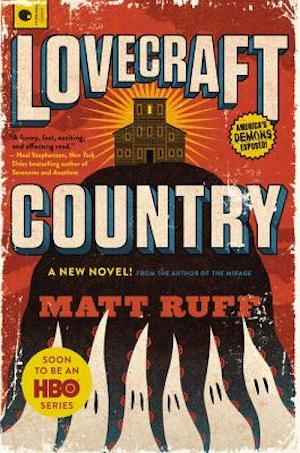
While certainly inspired by Lovecraft’s Necronomicon, The Book of Names from Matt Ruff’s Lovecraft Country is deserving of its own entry on this list. This is because it’s basically the opposite of the Necronomicon, in that instead of bringing about death, its intention is life and creation. But of course, the book is still decidedly dangerous. Spells from the book can grant invulnerability and resurrect the dead (in a non-zombie way), and there’s even a recipe for a metamorphosis potion.
When our cast of characters first encounter The Book of Names, they initially mistake it for the Necronomicon, and Ruff slips in a mention of the fact that Lovecraft didn’t understand Arabic names, with “Abdul Alhazred” being a grammatically incorrect invention.
Invocations from Hereditary (2018)
We readers know that books are filled with invaluable knowledge, and that holds true in horror movies too. Near the beginning of Ari Aster’s Hereditary, Annie (Toni Collette) starts to go through a box of her recently deceased mother’s things, finding a photo album and some books; one of the texts, Notes on Spiritualism, contains a note from her mother. It brings up memories from her troubled childhood, so she shuts the box and puts it out of her mind. This proves to be a big mistake—especially considering the supernatural occurrences that her family have started experiencing.
[Spoiler warning for Hereditary, if you haven’t seen it.]
Near the end of the movie, Annie finally returns to the box and pulls out a book called Invocations. She reads about King Paimon, a powerful male demon who has the face of a woman and seeks to inhabit a male host. She also goes through the photo album and it reveals that her mother was the leader of a cult who worshiped this demon. The whole family ends up dead, with the body of Annie’s son Peter (Alex Wolff) being used as a vessel for Paimon. If only poor Annie had read Invocations earlier.
Sutter Cane’s Novels from In the Mouth of Madness (1994)
Although it’s not one of my favorite John Carpenter movies, In the Mouth of Madness has a fantastic concept. Fictional horror author Sutter Cane (surely a thinly veiled reference to Stephen King) has gone missing along with the highly anticipated manuscript of his next book, In the Mouth of Madness. An investigator (played by Sam Neill) is sent to find the popular author, but finds himself starting to doubt reality when the nightmarish creations from the pages of Cane’s books begin to materialize in real life. In the Mouth of Madness is filled with Lovecraftian cosmic horror and also briefly features Hayden Christensen (best-known for playing Anakin Skywalker) in his first movie role.
Mister Babadook from The Babadook (2014)
The scares in Jennifer Kent’s The Babadook begin after six-year-old Sam (Noah Wiseman) asks his widowed mother Amelia (Essie Davis) to read him a pop-up book called Mister Babadook. Despite never having seen the book before (major red flag!), she begins reading. The pages become increasingly sinister in their depiction of the titular Babadook, a large supernatural humanoid creature (and eventual queer icon, thanks to the internet), which later seems to come to life to haunt Amelia and Sam.
Amelia tears up the book and throws it out, but it reappears and the previously blank pages are now filled with warnings from the Babadook. Next, she tries burning the book, but still the big bad Babadook continues to terrorize them.
Mister Babadook was actually made into a real book by Insight Editions—although an accompanying appearance from the Babadook is not guaranteed upon reading. It’s a near-perfect replica of the book from the movie, but with the addition of a few extra pages. Copies were extremely limited, but a flip-through of the book can be seen in this video.
The Book of Accidents from Chuck Wendig’s The Book of Accidents (2021)
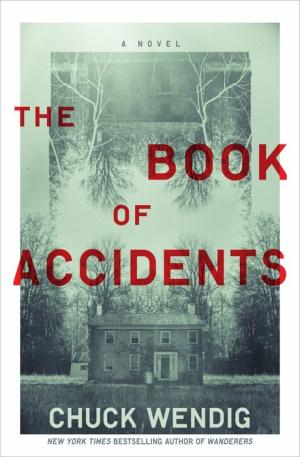
The Book of Accidents kicks off with Nate moving back to his childhood home with his wife Maddie and their son, Oliver. Nate suffered an abusive childhood at the hands of his now-dying father and when he moves back to the house he begins to see ghosts. Maddie and Oliver are also having their own bizarre experiences, with Maddie suffering blackouts and Oliver befriending a boy called Jake who can apparently do magic.
[Spoiler warning ahead.]
The titular Book of Accidents belongs to Jake, and in order to entice Oliver he produces objects out of thin air using his so-called spellbook. But that’s not all the book can do. As its name suggests, it is literally a logbook of accidents that happened in a mine, but it’s also a powerful magical text that allows Jake to traverse alternate dimensions. He’s been systemically destroying these other worlds and Oliver’s is the last one standing. Being able to dimension-hop via a book sounds fun in theory, but allowing that power into the wrong hands isn’t worth the world-ending risk.
The Spellbook from Hocus Pocus (1993)
Winifred Sanderson’s spellbook in Hocus Pocus feels a bit like the Disneyfied version of the Necronomicon. Aside from the fact that both books are grimoires, they’re both bound in human skin, and the Hocus Pocus version even features a bulbous eye, which echoes the grimacing facial features on the Evil Dead rendition of the eldritch tome. The pages of Winnie’s sentient spellbook, which she affectionately addresses as “Book,” contain witchy words and recipes that can turn people into immortal cats and raise the dead—but Book does prove that it has a heart (metaphorically, of course) in the 2022 sequel. Still, its pages hold dangerous incantations and so, in the words of Thackery Binx, “Nothing good can come from this Book. You got it?!”
***
Are there any other horrifying or menacing books from fiction and/or movies that I’ve missed in the list above? Let me know in the comments below!
Lorna Wallace has a PhD in English Literature and is a lover of all things science fiction and horror. She lives in Scotland with her rescue greyhound, Misty.


